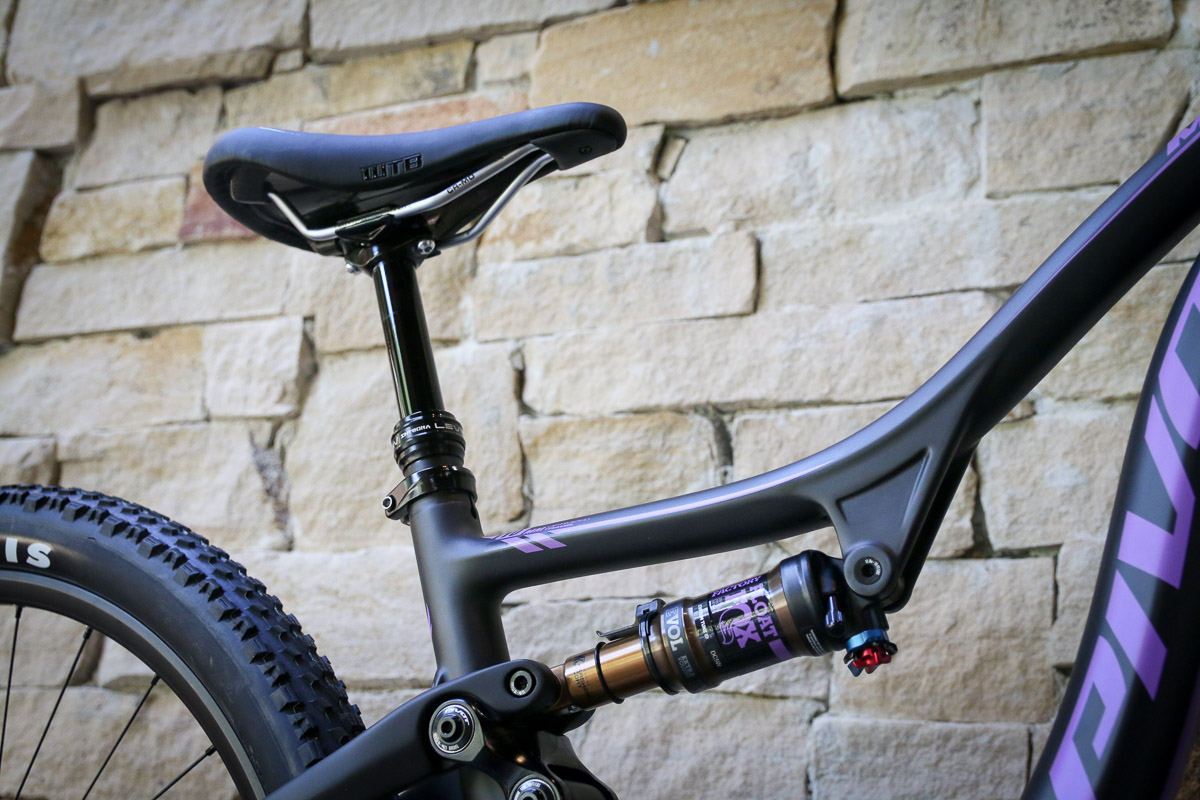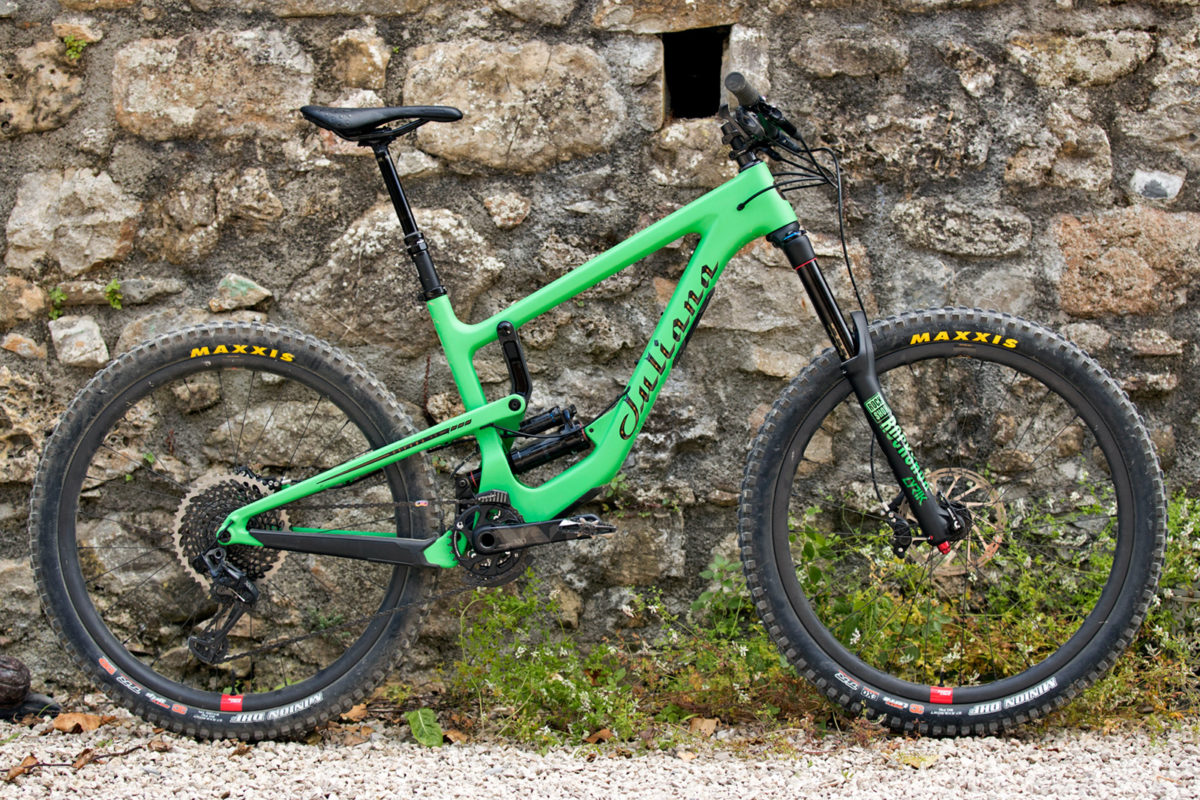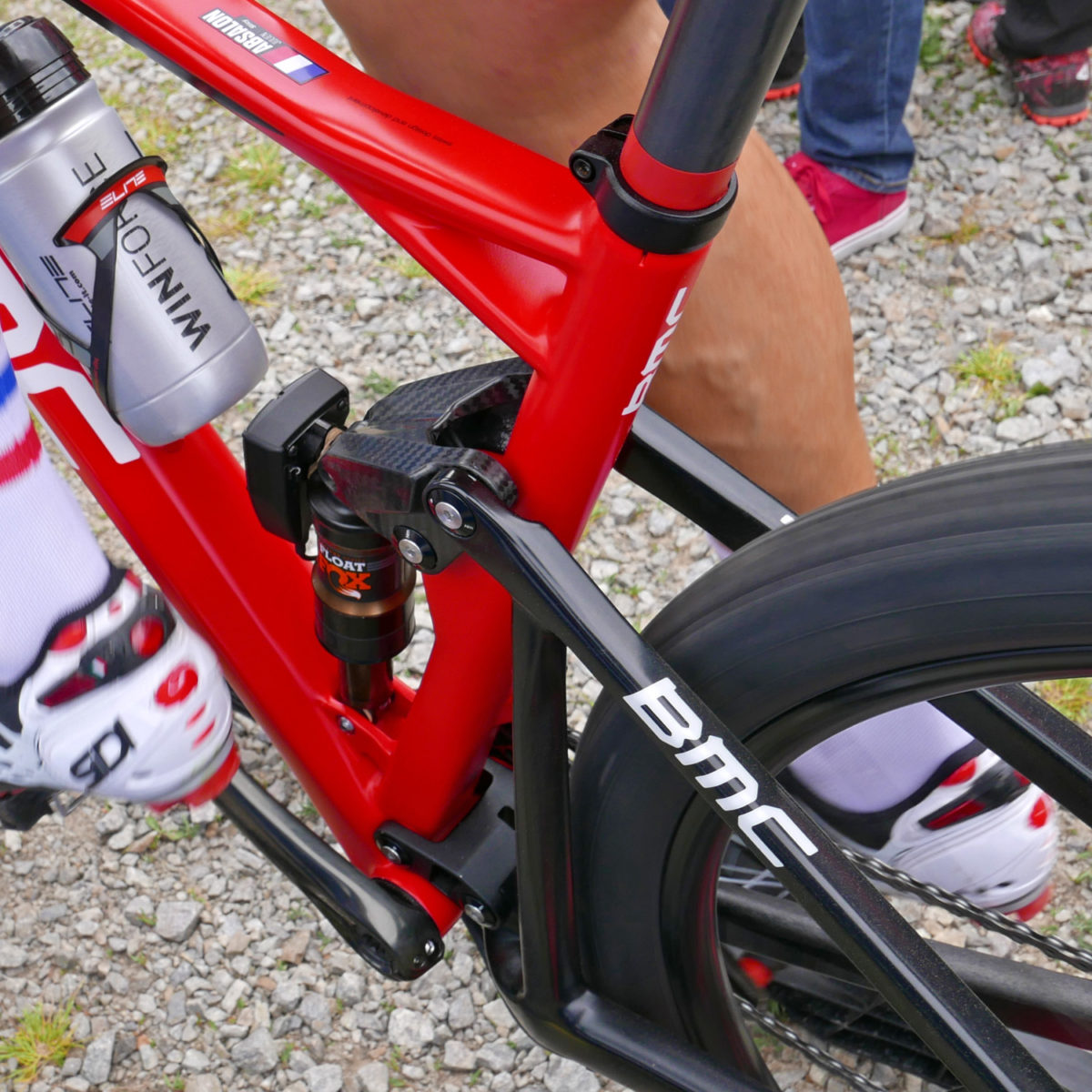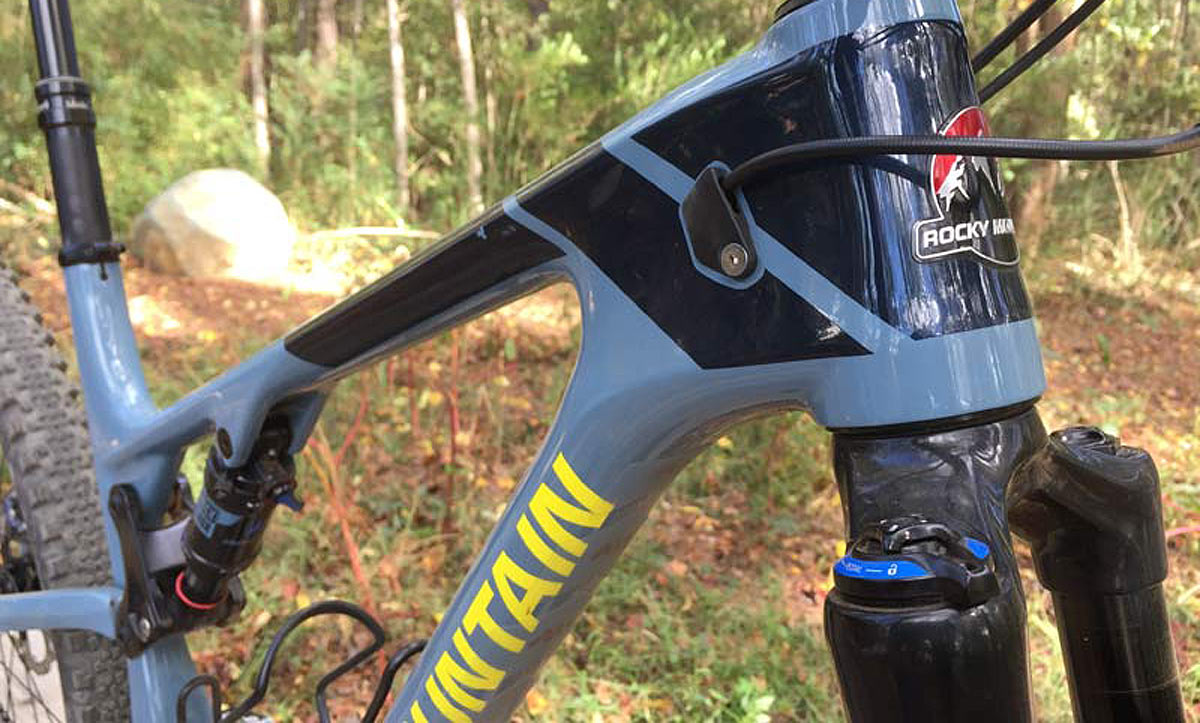With modern suspension bikes, so much attention is paid to the pivot placement, leverage ratio, and shock stroke and length. On top of that, every bike manufacturer works with the suspension manufacturer to custom tune their shocks to work in harmony with the frame design. There’s an incredible amount of work by both parties put into ensuring what you buy rides exactly like the designer intended. But we had to wonder, is all of that designing and tuning done around an “ideal” rider size and weight? Does anyone change the tune based on frame size or intended rider size?
Turns out yes, some do. While this is by no means comprehensive (we simply couldn’t get responses from every brand), it does illustrate why some brands do and some brands don’t. Here’s who we talked to:
- Ken Perras, Rocky Mountain Bicycles Product Manager
- Chris Cocalis, President, Pivot Cycles
- Mike McAndrews, Director of Suspension Technologies, Specialized Bicycles
- Barrett James, Product Manager, Niner Bikes
- Antoine Lyard, Mountain Bike Product Manager, BMC
BIKERUMOR: FOR A GIVEN FULL SUSPENSION BIKE MODEL, DO YOU USE THE SAME OR DIFFERENT SHOCK DAMPING TUNES ACROSS FRAME SIZES?
ROCKY MOUNTAIN: Yes, we use different tunes for different frame sizes across a given platform.
PIVOT: On the Mach 4, we actually run a shorter eye to eye shock with a higher leverage ratio so that pressures and valving for a lighter rider are similar to what someone would typically run on the larger sizes. With most of our other models, we start off with a slightly higher leverage ratio and develop the shock tune to fit a wide range of riders with the lever adjustments. With the Mach 5.5, using a DPS shock for example, there are 3 lever positions and then 3 options on the open position for a total of 5 possibilities. The lightest riders would run open 1 where the heaviest riders would run the lever in the middle setting. We’ve been able to accommodate the lightest riders this way regardless of frame size. If a rider is over 210lbs and aggressive then they may benefit from a firmer tune or a shock option like the Float X2 upgrade that we offer which provides a nearly unlimited range of adjustments.
SPECIALIZED: We spend a lot of time on the specific shock tune for each of our frame designs. We’ve developed our own damping curve theories (for both compression and rebound) that align the suspension performance with the overall vision of our bikes. But, within a specific frame platform (i.e. Stumpjumper) once the damping curves are set, we don’t need to adjust the internal damping for different size frames to achieve our end performance goal. All the high-performance shocks we use today have an adequate range of adjustability with the external knobs to adjust the damping curves as needed to perform well with the variety of spring rates and riding conditions.
NINER, BMC: Editor’s note: Niner and BMC do not change shock tunes across frame sizes, and their reasons are included below.
BIKERUMOR: WHAT IS THE REASONING BEHIND THIS SPEC DECISION?

ROCKY MOUNTAIN: The goal was to fine tune the ride quality across all frame sizes. The suspension manufacturers do an incredible job of building in a wide usable range for each product they make, however it is hard to accommodate riders across the entire weight and size range. To improve the experience on our bikes, I make sure the shock tune is appropriate for the smallest and largest riders and not just one average rider profile. Our extra small and small size frames will come with lighter compression and rebound tunes, and increased air can volume, meaning few or smaller internal spacers if they are used, so they can reach the full potential of the frame’s suspension design. For extra large frames, the changes trend towards heavier compression and rebound tunes with decreased air can volume, meaning more or larger internal spacers. This is a broad overview of what happens with each platform; the reality is each platform, combined with a specific shock, requires individual attention to make sure the ride experience can be fully maximized.
PIVOT: dw-link bikes pedal very efficiently so the lever options don’t need to be relied upon to provide additional pedaling efficiency for climbing vs descending. Pivot riders generally set it and forget it, which is our intention (unless using the firm mode for pavement or smooth fire road climbs). We can tune the different lever positions to provide the right tuning across a wide range of riders. Oftentimes it is the aggressiveness of the rider as much or more than the riders weight that affects the optimal tuning and lever position. Also, the weight ranges of riders on the smaller frames can cover a pretty wide spectrum so it doesn’t often make sense to just use a lighter weight tune when we can easily and affectively accommodate it with external adjustments. A top World Cup level rider like Chloe Woodruff who is very light does not need to lighter valving to accommodate her weight on her Mach 4 or her Mach 6 but will choose a slightly firmer setting due to her ability to push the bike at a faster pace and hit it harder than your average rider.
SPECIALIZED: Spring rate! In order to obtain the best possible ride, it’s by far more important to get the correct spring rate and spring curve to match a rider’s size, ability and terrain. For the coil spring bikes, we have frame-size-specific spring rates that the bikes are spec’d with. For the air spring bikes, spring rate is easily adjusted with air pressure, and the spring curve with volume.
NINER: At Niner, we view shock spec in a couple of different ways. First, we look at the options shock companies have to offer and, when it comes down to it, what they have to offer is good – really good. Shock technology has gotten to a point where one shock offers such a wide range of tuning options that it can accommodate a wide range of riders. The second thing we look at is the low leverage ratio of our proprietary CVA suspension design. A low leverage ratio means we can offer shocks that have a light compression tune. This light compression tune also covers a wide range of riders. So, when we combine the two, we’ve found that we have nearly complete coverage on our rider spectrum.
BMC: We considered this topic and conducted our own testing. There are some assumed varying parameters when it comes to size specific componentry: rider weight, weight distribution and riding style comes to mind when we talk about suspension. So we tested suspension tunes based on the assumption that smaller riders are lighter and bigger riders are heavier (riding syle is hard to control besides intended use of the bike). We concluded that the baseline of performance of modern suspension allows us to address the needs of riders within our frame size range. As of today our testing shows that the biggest contributor to size specific suspension setup is spring rate, which can be easily tailored with a shock pump and volume spacers.
Of course this topic is a dynamic one, and the appearance of consumer facing data acquisition systems (ShockWiz and others) may build a better awareness of suspension dynamics and open opportunities to be more specific.
BIKERUMOR: ANY DIFFERENCES BETWEEN MALE & FEMALE SPECIFIC (TUNES) FOR THE SAME MODEL?

ROCKY MOUNTAIN: At Rocky Mountain Bicycles we don’t distinguish between male and female bicycle models; all of our bikes are made for all genders, including those that fall outside the two options provided in the question. Rather, we focus on the average rider size per frame and tailor the shock tunes with that information in mind. As I mentioned previously, the suspension manufacturers build in a wide range of usability within their product which has the ability to cater to riders that might be the same size but weigh differently.
PIVOT: We offer female-specific options on all of our builds regardless of size. Riders can choose from a variety of crank lengths, bar lengths and female-specific saddle options.
SPECIALIZED: The same principle applies here; we’ve found over the years working with female riders that a slight change in the spring curve works better. Basically, we run the linear rate of the curve deeper into the bump zone of the travel. The two main contributors for this are rider’s weight and riding style. Statistically, the bell curve of weight to height ratio for women is shifted to the lower side of the scale when compared to men; and in many cases, woman riders interpret the trail conditions differently; their line selection tends to be more fluid with an overall finesse in riding style that reduces the top down forces into the system for the same speed and trail conditions. Our suspension tunes for both men’s and women’s bikes are designed to suit the majority of riders – there will inevitably be some exceptions but of course suspension tune can always be adjusted as desired.
BMC: We currently do not offer female specific products, but if rider weight is the main factor of influence to suspension tune, and assuming that women are lighter for a given body size, then it makes sense.
BIKERUMOR: ANYTHING ELSE TO ADD?

ROCKY MOUNTAIN: Suspension design and shock tuning is an incredibly complex process; our goal is always to maximize the experience for our customers. We work extensively with our preferred suspension suppliers, such as Fox and Rock Shox, to make sure we provide the ride experience that a Rocky Mountain Bicycles customer expects when they swing a leg over one of our frames. For riders looking to get the most out of their investment I recommend going a few steps further and consulting a local suspension expert to get your bike setup according to your personal preferences. These experts can exist at your local bike shop or have a specialized business catered to suspension tuning and setup. In North Vancouver, I recommend SuspensionWerx for custom tuning and setup tips and Suspension Therapy for a highly involved fit and setup experience.
PIVOT: We refer to our overall sizing philosophy as rider size specific. When it comes to Pivot’s X-small models, they are designed for riders from about 4’11” (depending on model) to approximately 5’4″. These really cater to female riders as the geometries, tube shapes, carbon lay-up and overall tube sizes are designed for the riders that need this size frame. We do this with every size bike so that the entire set up is optimized for the rider size that will ride that particular model.
SPECIALIZED: As advice to all riders, I’d recommend taking the time to dial in your spring rates, spring curves and sag. Start with a baseline setting and write it down. It’s easier to play around with this stuff if you know you can get back to an established base. Also, a lot of people tend to look at shock and fork performance independently when that’s not the case; to achieve a high level of performance, the fork and shock must be balanced and working together. I’ve corrected many ill-performing shocks in the field by only making adjustments to the fork.
We all know the importance of scheduled maintenance yet most of us are usually off the back. Regardless of brand, frequent lower leg and air sleeve maintenance will deliver the biggest bang for the buck. If you’re somewhat comfortable turning wrenches, this is a relatively simple way to keep your suspension feeling dialed. Authorized service manuals and tutorials can be found easily online. Give it a shot!
Editor’s note: Thanks a ton to everyone that chimed in!
The fun never ends. Stay tuned for a new post each week that explores one small suspension tech, tuning or product topic. Check out past posts here. Got a question you want answered? Email us. Want your brand or product featured? We can do that, too.
